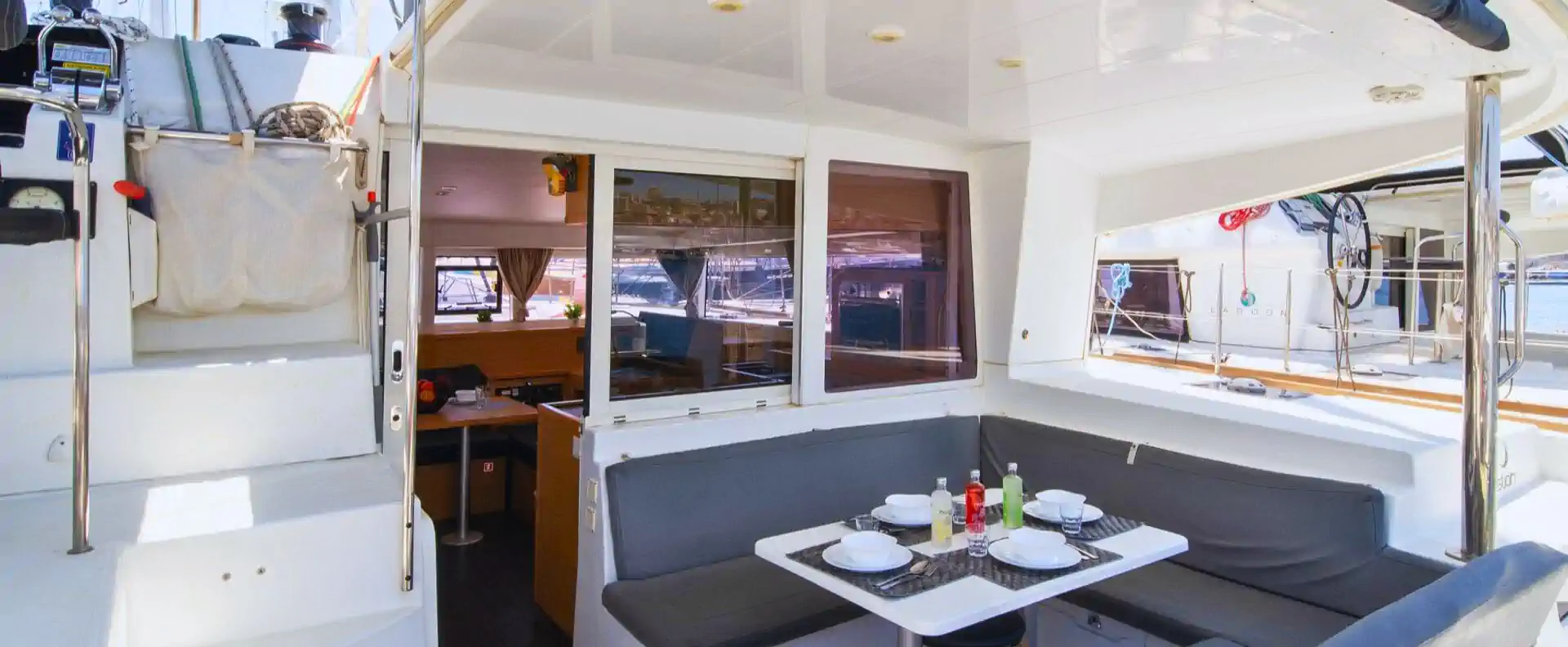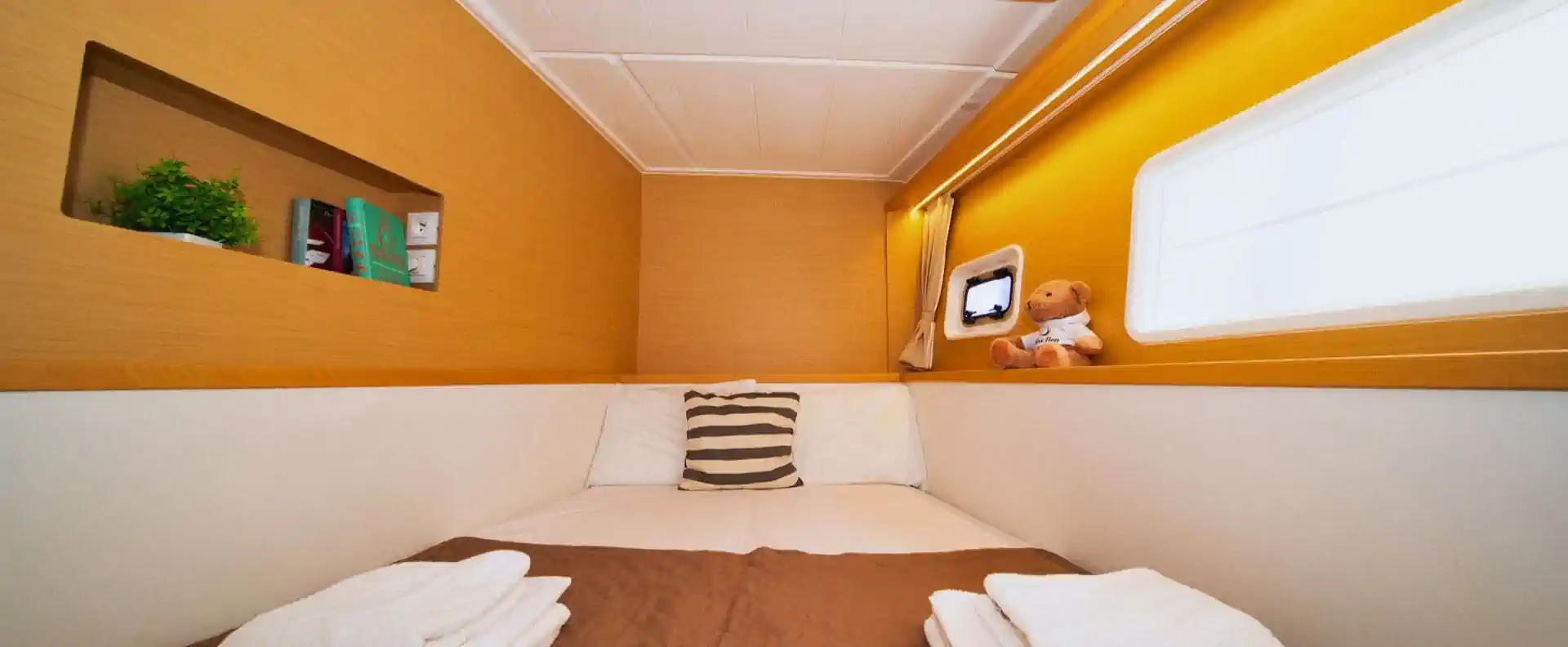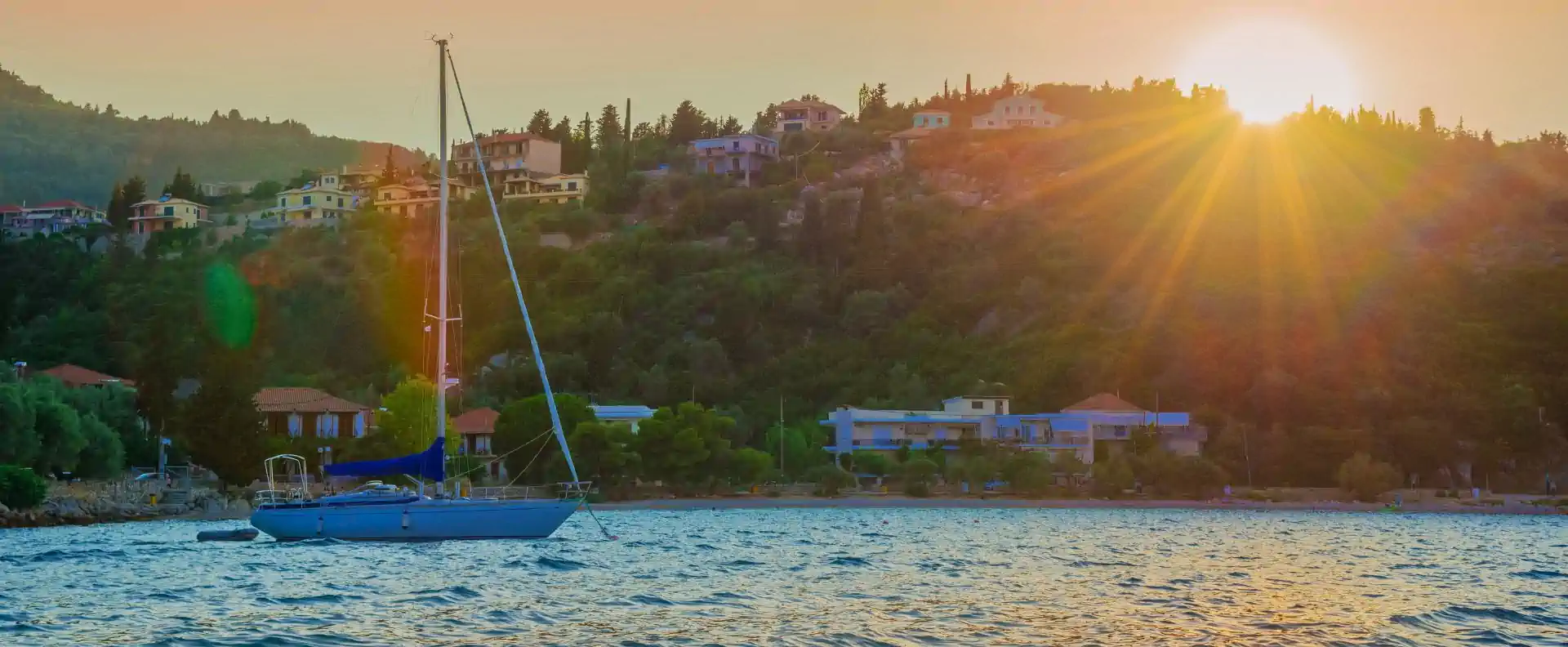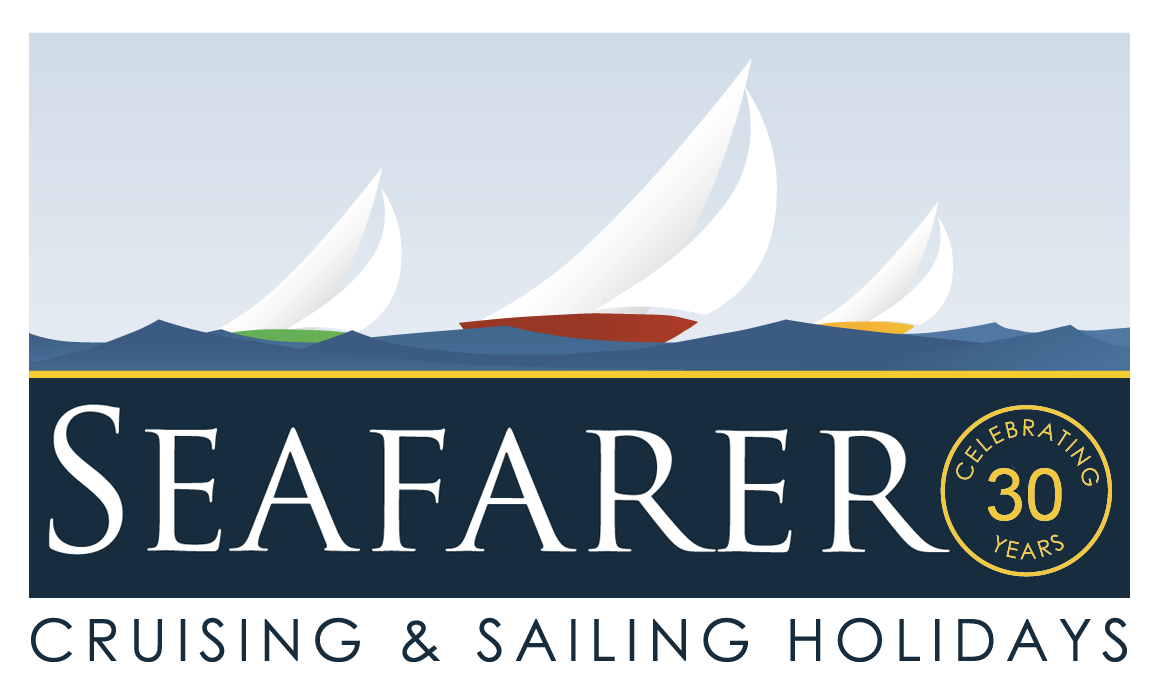Sailing Catamaran: What Changes from Your Monohull
A sailing catamaran offers a new way to experience the sea. Nowadays, these yachts are appearing in marinas everywhere, admired for their space, balance, and comfort at anchor. With a level deck and steady motion, they make life on board easy and enjoyable for every crew member.
If you already sail, a sailing catamaran isn’t a new world, just a new rhythm. At first, the handling feels different, the rhythm shifts, and the first few manoeuvres can feel unfamiliar.
That’s where Seafarer’s new Catamaran Course in Greece steps in. As a result, you’ll turn curiosity into confidence and master the techniques to handle a catamaran with ease.
Why Catamarans Are Taking Over
Catamarans have become a familiar sight in marinas and harbours across the world, and for good reason. Indeed, with twin hulls and generous width, a sailing catamaran offers comfort and stability for a more relaxed experience:
- The saloon, galley, and deck are all on one level. This open design lets the crew move freely together.
- No heel means guests stay comfortable and confident, even when the breeze picks up, perfect for families and mixed-experience crews.
- Moreover, the extra volume allows for comforts like air conditioning, a generator, and a watermaker. These features add autonomy and a touch of luxury that tempts even devoted land-lubbers aboard.
In short, a sailing catamaran combines the pleasure of sailing with the ease of a floating villa. Plus, it’s easy to see why they’re fast becoming the yacht of choice for both newcomers and seasoned sailors alike.

What Actually Changes When You Sail a Catamaran
If you’ve spent years on monohulls, the first time you take the helm of a sailing catamaran can feel strange. Everything looks familiar, yet the handling has its own logic.
You’ll notice it straight away in close quarters. In fact, with twin engines, you’re not relying on prop-walk anymore. You’ll use opposing thrust to pivot neatly on the spot, which feels different at first but quickly becomes satisfying.
The wide hulls mean more windage and inertia, so you simply plan ahead and move with intention. Manoeuvres that felt instinctive on a monohull just need a touch more space and timing on a sailing catamaran.
Out on the water, there’s no heel to contend with. The deck stays level and steady, so you reef a little earlier and keep everyone comfortable. When it’s time to anchor, you’ll work under the foredeck between the hulls. This position gives stability and a clear view of the water below.
From the raised helm, visibility is excellent, though your pivot points are different. Once you learn where the bows sit in relation to your viewpoint, everything clicks into place.
By the end of the sailing catamaran course, the unfamiliar becomes second nature. What once felt daunting turns into quiet confidence and a new kind of sailing freedom.

Sailing Catamaran Manoeuvres You’ll Practise on Course
Every skipper knows that handling a yacht in open water feels very different from manoeuvring in a tight marina. Similarly, a sailing catamaran is no exception. The wide beam, twin engines, and light windage demand precision, but once you understand the technique, it becomes deeply satisfying.
During your week on board, you’ll practise the skills that turn theory into instinct:
- Box berths and lazy lines in busy marinas.
- Crosswind handling and stern-to mooring under pressure.
- Using springs and throttle control to pivot the catamaran smoothly.
- Reversing confidently with twin engines.
Each exercise builds on the last until every movement feels controlled and deliberate. At the end, the thought of mooring a large sailing catamaran on a windy afternoon will no longer feel daunting. On the contrary, it will feel like second nature.
Real-World Systems on the Lagoon 400
The Lagoon 400 is more than a comfortable training yacht. It’s a floating classroom that mirrors the systems found on many modern catamarans.
During the course, you’ll get hands-on experience with real onboard equipment, not just diagrams or demonstrations. You’ll learn to manage the generator, operate the air conditioning, and understand the yacht’s watermaker system. Each task helps you handle the boat as if it were your own.
This isn’t brochure learning. It’s practical, real-world sailing. By the end of the week, you’ll know every switch and control and how to keep the yacht running.

The Best Destinations for Sailing Catamaran Adventures
Once you’ve built your confidence on the Lagoon 400, the world of catamaran sailing opens wide. The skills you learn in Greece prepare you to charter or join a flotilla with complete peace of mind.
Seafarer offers catamarans for both bareboat and flotilla holidays in Greece. Destinations include the Dodecanese, Sporades, Ionian islands, Croatia, and Thailand. In addition, these destinations suit catamaran sailing, offering calm anchorages, open space, and quiet bays perfect for wide-beamed yachts.
Imagine gliding into a sheltered cove at sunset and anchoring for dinner beneath a sky full of stars. That’s the real reward of your training: freedom, comfort, and confidence wherever you choose to sail next.
Course Details and Booking Info
The Seafarer Catamaran Course runs for seven nights with six full days of tuition from an RYA instructor. During this time, training takes place at Seafarer’s base in Nikiana, Lefkada, exploring the Southern Ionian islands. Conveniently it’s close to Preveza International Airport too.
- Dates: 26 October to 1 November 2025, with the next course running in April 2026.
- Prices: £995 per person sharing a cabin or £1,415 for single occupancy.
- Included: Tuition, mooring fees, fuel and yacht running costs, bed linen, towels, and provisions for breakfast and a light lunch.
- Optional extras: Flights and transfers from the UK with full ATOL protection.
Finally, if you’re ready to take the next step and master a sailing catamaran, secure your place today.

